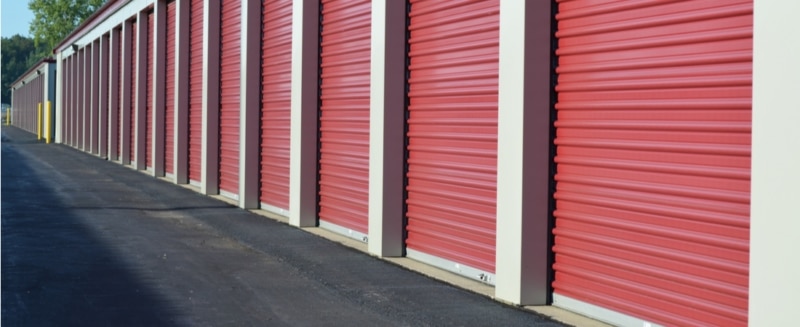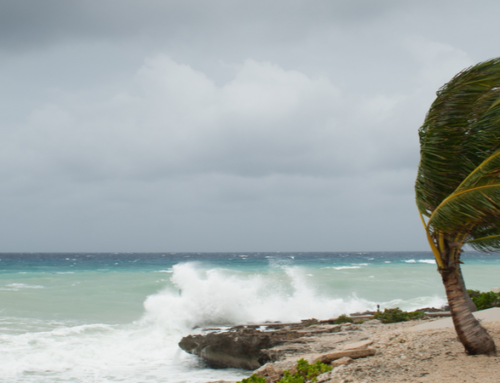Spring is in full bloom, which makes now a great time to tackle some spring cleaning and finally sort through the clutter that piled up all winter long.
Whether you are gearing up for a trip to your storage unit to pack away more stuff or thinking about renting a storage unit for the first time, you’ll want to make sure you have the insurance policy you need to protect your belongings.
“If an item is valuable enough that you are willing to pay for storing it, the item should be financially protected with the proper amount and type of insurance policy,” says Loretta Worters, vice president of communications at the Insurance Information Institute.
“Even in the best managed storage facilities, theft, fire, and other disasters can and do occur. That’s why before signing a rental agreement, it is important to find out what types of losses will be covered by the storage facility and whether supplemental insurance may be needed.”
Before you start rummaging through your closets and drawers deciding what can be stowed outside of your home, consider these six questions to make sure your storage insurance needs are met.
1. Do you have off-premises protection through your homeowners or renters insurance?
Before purchasing any additional insurance for your stored items, make sure to check how much off-premises coverage is included in your homeowners or renters policy, says Pete Moraga, spokesman for the Insurance Information Network of California.
If you have off-premises protection, the items in your storage unit might already be covered from fire damage, theft, tornadoes, and other disasters listed in the policy.
Off-premises coverage will vary by state and policy—some insurers may limit the off-premises coverage for personal possessions to 10 percent of the overall amount of your homeowners insurance, according to the Insurance Information Institute.
Regardless of the total amount of off-premises coverage, there may also be a limit per item. Most standard homeowners and renters policies limit the dollar amount for theft of personal possessions, like jewelry, to $1,000 to $2,000.
2. What type of insurance is available through the storage facility?
Your storage facility will probably require your insurance to cover the full replacement cost of the belongings in your unit. If you need to supplement the coverage you already have, consider purchasing insurance from the facility itself.
Keep in mind that the majority of storage facilities will limit the value of property you can store in the unit based on the size and the amount of your rent. That limit is normally around $20,000, according to the Insurance Information Institute.
3. Do you need extra coverage for expensive items?
If you are planning to fill your storage unit with expensive items, like jewelry, art, or antiques, consider adding an endorsement, which extends the existing coverage, or a floater, which provides coverage for a specific item whether it’s in your home, your storage unit or on a trip with you, to your homeowners or renters policy.
There are special storage facilities that regulate temperature and humidity levels for valuable items, and a bank safe deposit box can be a good option for small pieces.
You can also pay for additional coverage through the storage facility, but some storage insurance might still exclude costly belongings.
4. What’s excluded from your policies?
In addition to valuable items, most insurance—whether it’s through your homeowners, renters, or storage facility policy—does not cover damage caused by flooding, earthquakes, mold, mildew, vermin, or poor maintenance.
“A storage unit may have a separate earthquake or flooding policy, but you can’t assume that,” Moraga says. “It’s one of the things you want to make sure you specifically ask.”
5. Is transportation covered?
If you are using portable on-demand storage, where you pack up the storage unit at home and then have someone take it to the facility, Moraga says to check if your insurance covers your belongings while they are being transported from house to storage unit.
6. Have you made a home—and storage unit—inventory?
While you are cleaning out the old to make room for the new, consider creating an inventory of all of the items in both your home and storage unit. This might seem like a daunting task, but it will help your determine if your insurance coverage is adequate and will also serve as an important resource if you ever have to make a claim. If you need help staying organized, check out home inventory software programs that allow you to scan photos and upload receipts.
Spring will be much more enjoyable if you are able to put a lock on your storage unit and know that all of your belongings are protected.
Joslin Woods is a researcher, writer, and Web producer at Think Glink Publishing, with a background in print and digital media. Previously, Joslin worked as a news reporter for the international news agency Agence France-Presse and as a freelance reporter for the Sun-Times News Group. She is a graduate of Vanderbilt University and Northwestern University, where she received a master’s degree in journalism.






